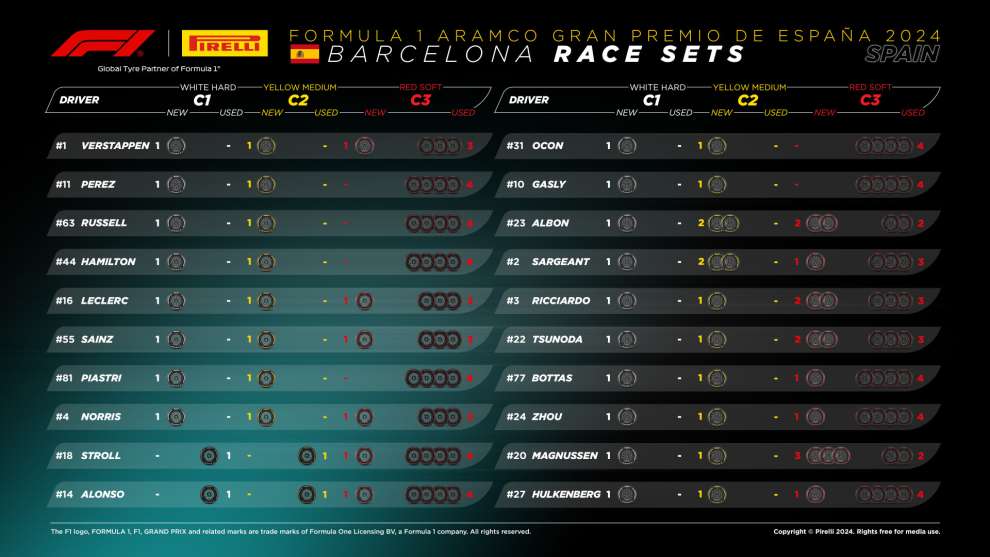by SIMONE PELUSO (BARCELONA)
The constantly changing weather here at Montmelò will also influence – and not a little – the management of the race and the strategies of the Spanish Grand Prix. In the morning a light shower of rain arrived between the F3 and F2 races and the forecast is constantly evolving: some expect water for the start and some see the arrival of the sun.
Low temperatures help
In any case, the most influencing variable at the moment is represented by drop in temperatures, which should not exceed 22°C at the time of departure, decreasing as we approach the final stages. This will shift the teams’ attention to the softer compounds – Soft and Medium – whose thermal degradation is easier to manage also reducing the chances of going on a three-stop strategy.
The two stops are almost certain
“Certainly the degradation we saw in free practice is quite high, but we expected it. Barcelona is one of the toughest circuits in the championship and even the roughness of the asphalt doesn’t help the tires from a thermal point of view. The lower temperaturesas the degradation is of a thermal nature on the rear axle, they should help in this sense and favor the softer compounds and in particular the C3 (Soft) – commented Simone Berra, Pirelli Chief Engineer – Already the C3 was a compound that gave you more extra grip when we saw it with asphalt temperatures around 50°C, even more so now that the temperatures are lower the extra grip should be strengthened or in any case even easier to extract compared to C2 and C1. We therefore think that Soft is the preferred compound for the racewith many teams trying to hold on to at least one set (Norris, Verstappen and Ferraris above all, ed.) for the departure”.

“We think that in any case the Soft can also be advantageous for subsequent stintsespecially the last one, to the detriment of Hard. The C1, in fact, struggled even with high asphalt temperatures because it is a tire that, with this type of asphalt, struggles particularly hard compared to C2 and C3. The grip is relatively low and the tire tends to slip. The degradation is due to surface overheating and is a continuous process: you slip, you generate overheating, overheating tends to decrease the grip even more, you tend to slip even more and generate further overheating and so on, so it is difficult controllable. There C3, on the other hand, has a truly continuous thermal degradation and can be managed: you know the curves where to manage it to keep the casing temperature under control when it starts to slip. Furthermore, the degradation on the C1 with track temperatures of 47-48°C was in line with the C2 and the C3 was not particularly different: this factor, combined with the performance level of about a second slower on the pace, does not make it be a good racing compound.”
The strategy on which many will try to converge is that a two stops: Soft at the start, then a stint on the Mediums and then closing with a new set of Softs. The three-stop strategy, feared on Friday, fails in these conditions.
Undercut or overcut?
L’undercut it can be an important weapon for gaining positions with strategy, but whoever manages to extend a lot will be able to exploit theovercut in the final part of the race.
“L’undercut is very powerful on tracks with high degradation and being that they will go towards softer tyres, therefore with a particularly simple warm-up, the undercut is effective if you are even two seconds from the car in front” explains Berra.
“If the undercut is powerful, someone who might think they handle the tire well and go a little bit longer to get fresher tire towards the end. So theovercut with a slightly broader vision of the race and not over a few laps, staying on the track for about ten more laps during the stint, it could be advantageous. We can say that today the values of those who are better at managing the thermal degradation of the tire will emerge cars that are kinder on the tires will certainly have an advantage“.
#Spanish #strategies #manages #degradation #wins
